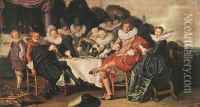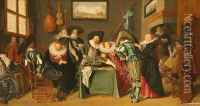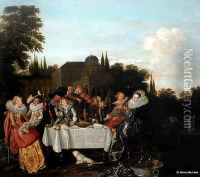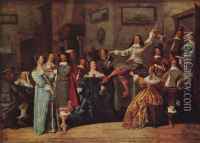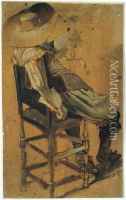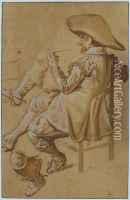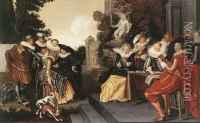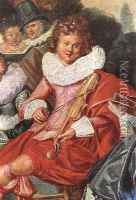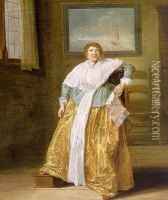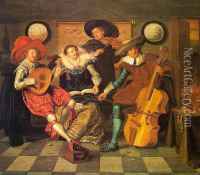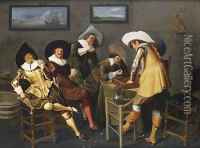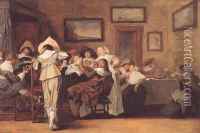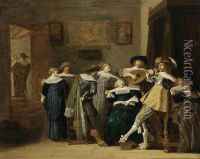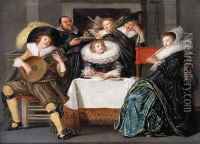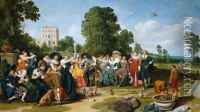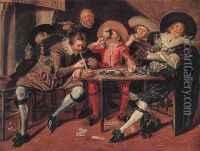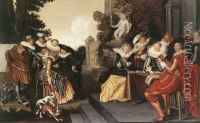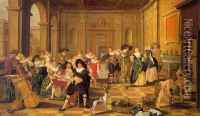Dirck Hals Paintings
Dirck Hals, born in 1591 in Haarlem, Netherlands, was a Dutch Golden Age painter known for his lively and elegant genre scenes. He was the younger brother of the famous portraitist Frans Hals. Despite being overshadowed by his brother's success, Dirck developed his own artistic style and contributed significantly to the genre of 'merry company' scenes, depicting groups of elegantly dressed young people enjoying music, dancing, and games.
Dirck Hals received his early training from his elder brother Frans, and possibly from other Haarlem painters such as Karel van Mander. Throughout his career, Dirck remained in Haarlem and became a member of the Haarlem Guild of St. Luke in 1617. The guild was an association of artists that played a crucial role in the cultural life and artistic development of the city.
His paintings are characterized by their use of bright colors, loose brushwork, and attention to detail in textiles and clothing. These features, along with the incorporation of light, space, and a sense of immediacy, were typical of the Dutch Golden Age painting. Dirck Hals often collaborated with other painters, such as Hendrick Pot, who would paint the figures while Hals would execute the landscape or interior elements in the compositions.
Despite his success, little is known about Dirck Hals's personal life. His works were popular in his own time but did not achieve the same lasting fame as those of his brother Frans. Nevertheless, Dirck's contribution to Dutch genre painting has been recognized by art historians, and his works are held in various museums and collections around the world.
Dirck Hals's artistic legacy includes a number of works that capture the essence of 17th-century Dutch society's leisure activities. He passed away in Haarlem in 1656, leaving behind a body of work that continues to be appreciated for its charm, vivacity, and historical value in the context of the Dutch Golden Age.
